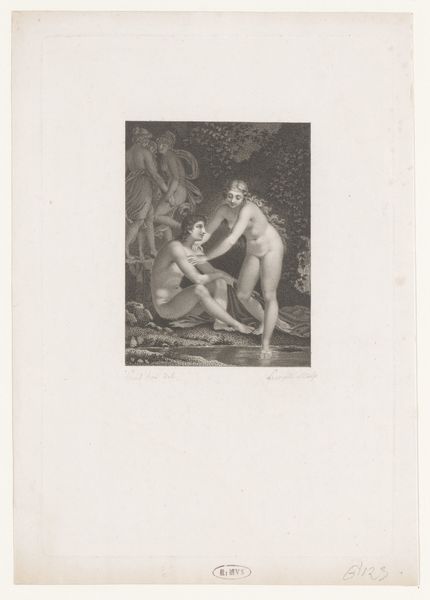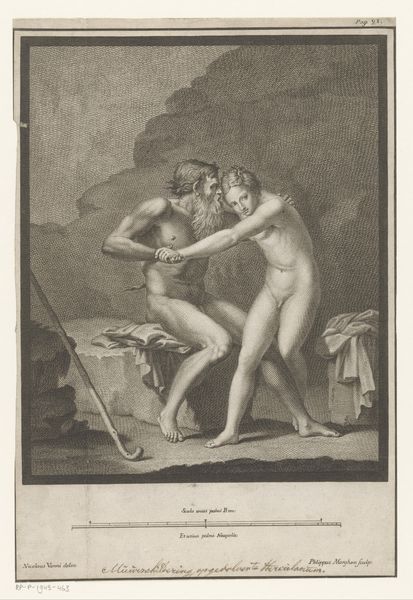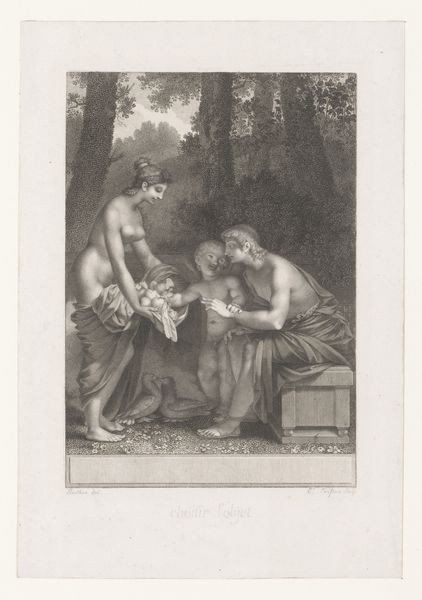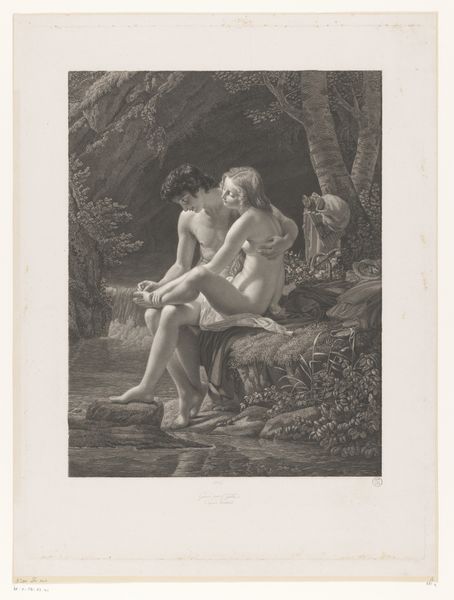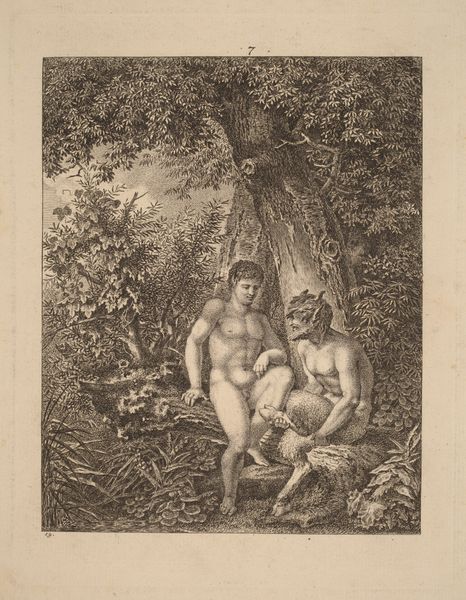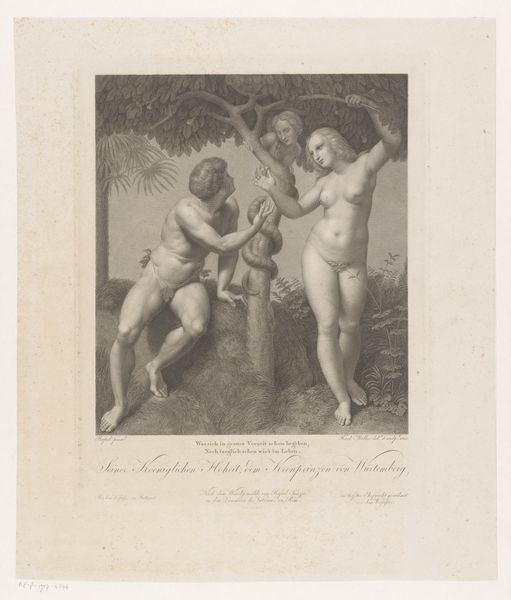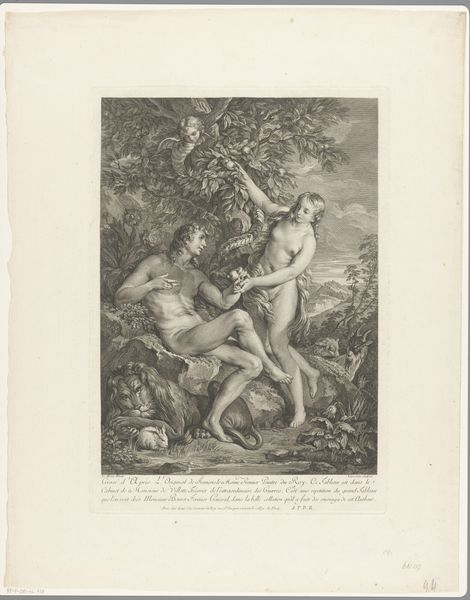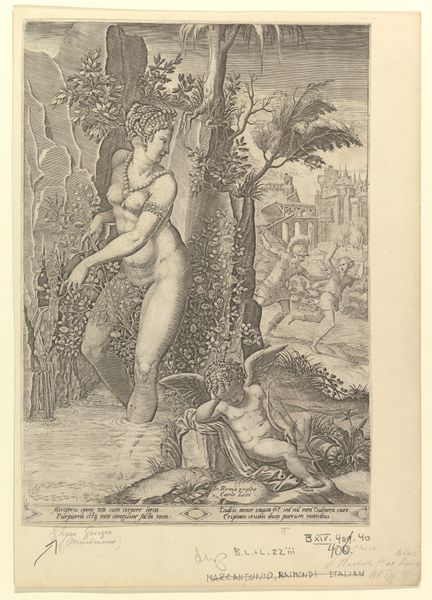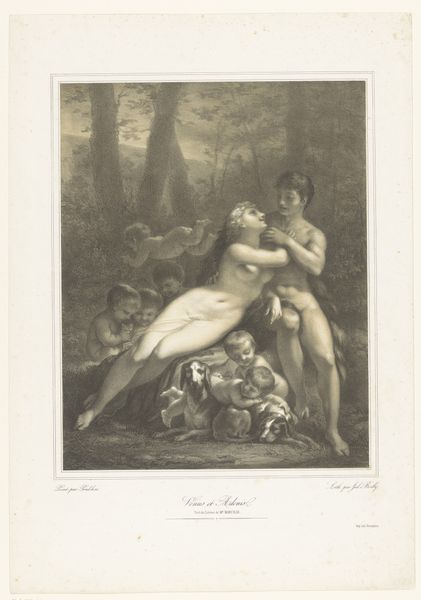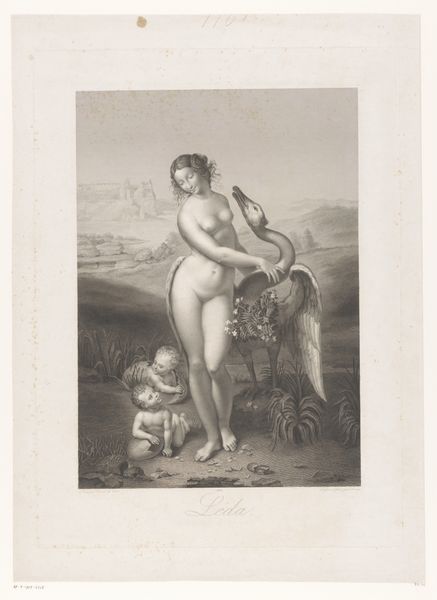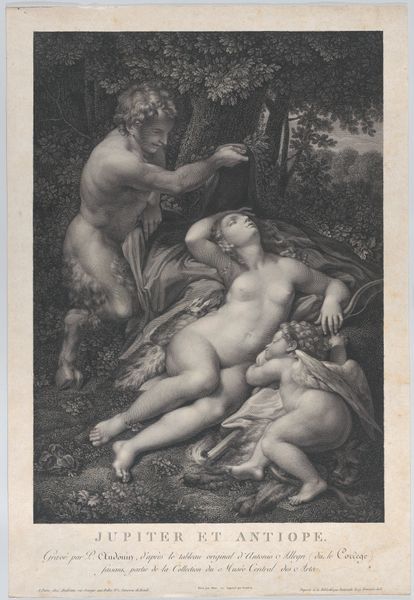
engraving
#
neoclacissism
#
old engraving style
#
figuration
#
historical photography
#
19th century
#
line
#
genre-painting
#
history-painting
#
nude
#
engraving
Dimensions: height 550 mm, width 412 mm
Copyright: Rijks Museum: Open Domain
Curator: Here we see Jean Louis Anselin's engraving, "Adam en Eva," created in 1808. Editor: It strikes me as strangely idyllic for such a fraught biblical moment. The figures are graceful, even serene, and the whole scene feels... contained, almost theatrical. Curator: The work falls squarely into the Neoclassical tradition, wouldn't you agree? We observe that calculated elegance in the figures, drawing from classical ideals of beauty. Anselin very consciously situates the figures in this moment right before the apple incident. There's also the cultural context—consider how interpretations of this scene shifted drastically during periods of social upheaval and revolution. Editor: Absolutely, the Neoclassical aesthetic is undeniable. And placing it in the broader scope of art history, the piece, of course, invites an examination of the male gaze. Eve is positioned to be the immediate center of the work. And in some ways this image really echoes broader themes about morality and transgression that continued throughout the 19th century in France. Curator: Indeed, that interplay of vulnerability and power, it echoes contemporary discourse about agency. Consider how later interpretations in art depict Eve as an active agent, while here, she's positioned as an almost passive figure, her agency denied. I also wonder what readings of race we can consider when thinking about an ideal human from over two centuries ago. Editor: Thinking about where this piece lands in relation to gender norms, its commentary is…complicated, even within its own time. What this says about Anselin's vision is not so much about morality but perhaps something adjacent. Curator: Ultimately, viewing "Adam en Eva" through a contemporary lens urges us to engage critically with established narratives, it seems. Editor: Absolutely, examining how even seemingly straightforward biblical scenes can reflect and perpetuate broader cultural and societal assumptions— it makes for a very nuanced, engaging look, still relevant after all these years.
Comments
No comments
Be the first to comment and join the conversation on the ultimate creative platform.
